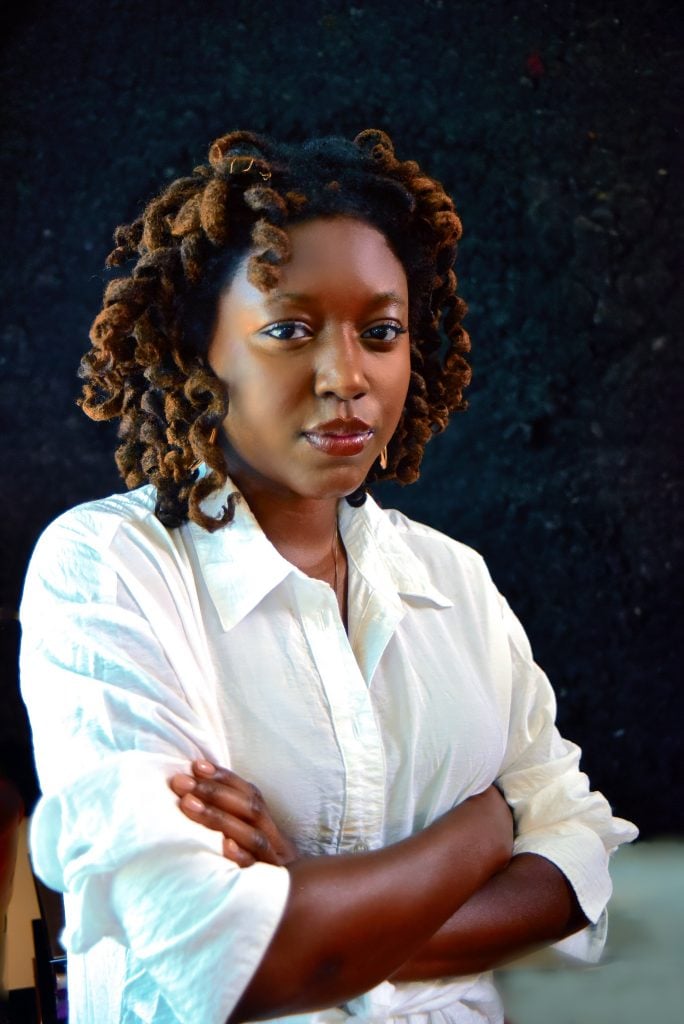“The past lives on in us today,” said artist Adebunmi Gbadebo, during a recent call from her studio. “I’ve been thinking a lot about the histories embedded in our lives, in the earth around us, and how these histories impact our lives today.”
Over the past several years, Gbadebo (b. 1992) has earned praise for her multimedia practice which engages historically and culturally significant materials. Soil from plantations, Black hair, and indigo dye become mediums to explore the connections between land, histories of slavery, ancestry, and the lived realities of today.
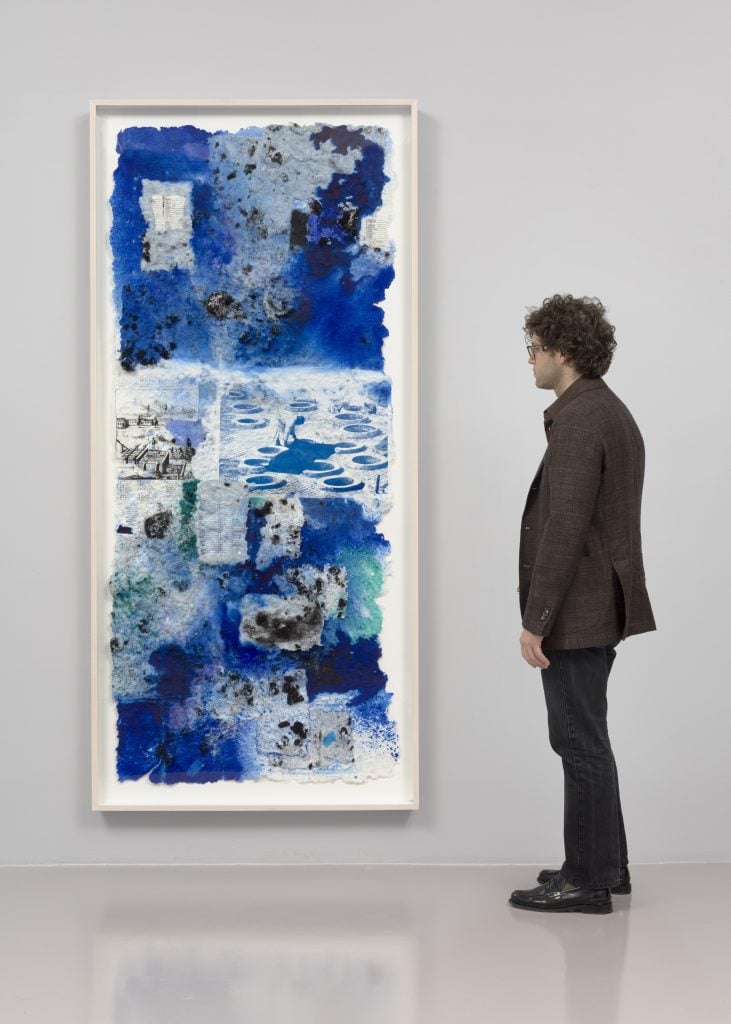
Adebunmi Gbadebo, Kano / Carolina, 2024. Photo by Lance Brewer © Adebunmi Gbadebo. Courtesy of the artist and Nicola Vassell Gallery.
She is best known for her clay vessels that are given anthropomorphic attributes—razor-sharp teeth, twists of hair. These vessels she makes from soil she has hand excavated from True Blue, the South Carolina plantation where her maternal ancestors were enslaved. These works first gained widespread attention when they were included in the exhibition “Hear Me Now: The Black Potters of Old Edgefield, South Carolina” staged in 2022 at the Metropolitan Museum of Art.
But Gbadebo, who splits her time between Newark and Philadelphia, also handmakes rice paper, which she often incorporates with photography or dyes with indigo. For the artist, the materials are core to her practice. “We don’t often think of a grain of rice as a material loaded with histories of violence, slavery, and colonialism. We don’t often think of the color blue as carrying that, either” she said.
This week, during the Independent Art Fair, the artist will be showing new ceramic and paper-based works with Nicola Vasell, her representing gallery, marking the first time works from both aspects of her practice will be shown together.
“Water is a foundational aspect of both the clay and paper processes. To take soil and transform it into clay is a process of adding gallons and gallons of water, which is very much like the process of taking cotton or black hair and forming it into a kind of pulp that can be transformed into paper,” she said, “There is a way in which working with water become very meditative and reflective. It slows down the process to allow for thought.”
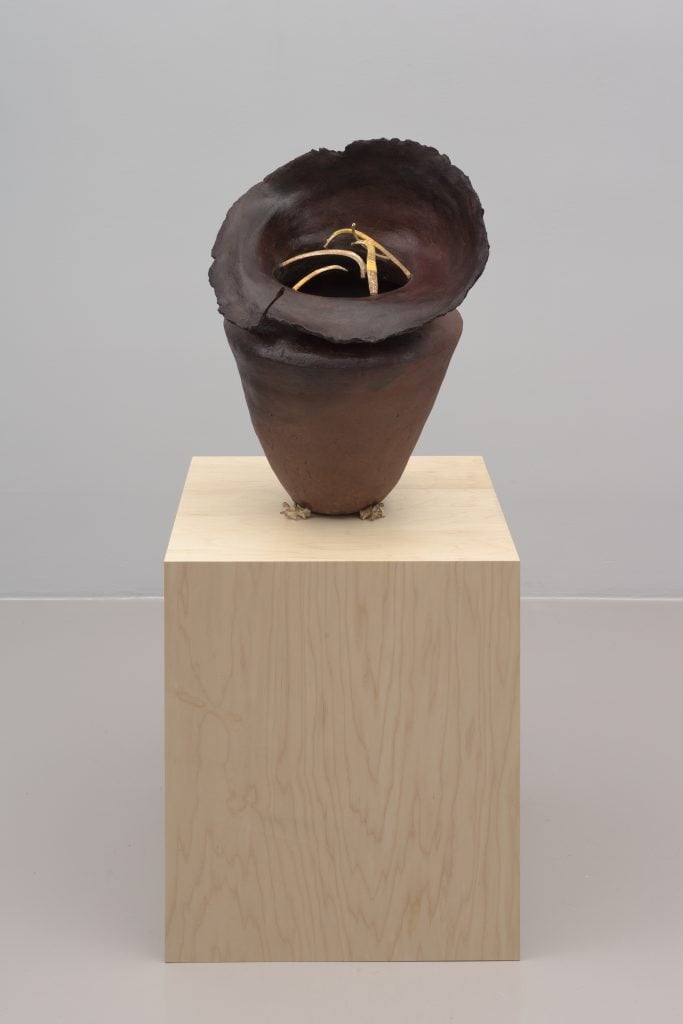
Adebunmi Gbadebo, Scott, York, 1881, Asleep in Jesus, 2024. Photo by Lance Brewer © Adebunmi Gbadebo. Courtesy of the artist and Nicola Vassell Gallery.
For Gbadebo, the presentation at Independent, too, offers a moment to reflect on her artistic journey so far—and to consider where she is heading. She had been making art for her entire life, she says. “Some of my earliest memories are of going into my kitchen cabinets and looking for what I could make to express myself artistically,” she said. The artist, who is of Nigerian and African American descent, credits her mother and her early mentors for cultivating her sense of expression.
“My mom was really influential in exposing me to different types of art making. I was taking private art classes from third grade to high school and a lot of the kind of instructors that were guiding me through that period of my life were very experimental,” she recalled.
However, when she enrolled in art school (she earned her BFA from the School of Visual Arts), Gbadebo found herself immersed in an art historical canon that was overwhelmingly focused on the white history of painting.
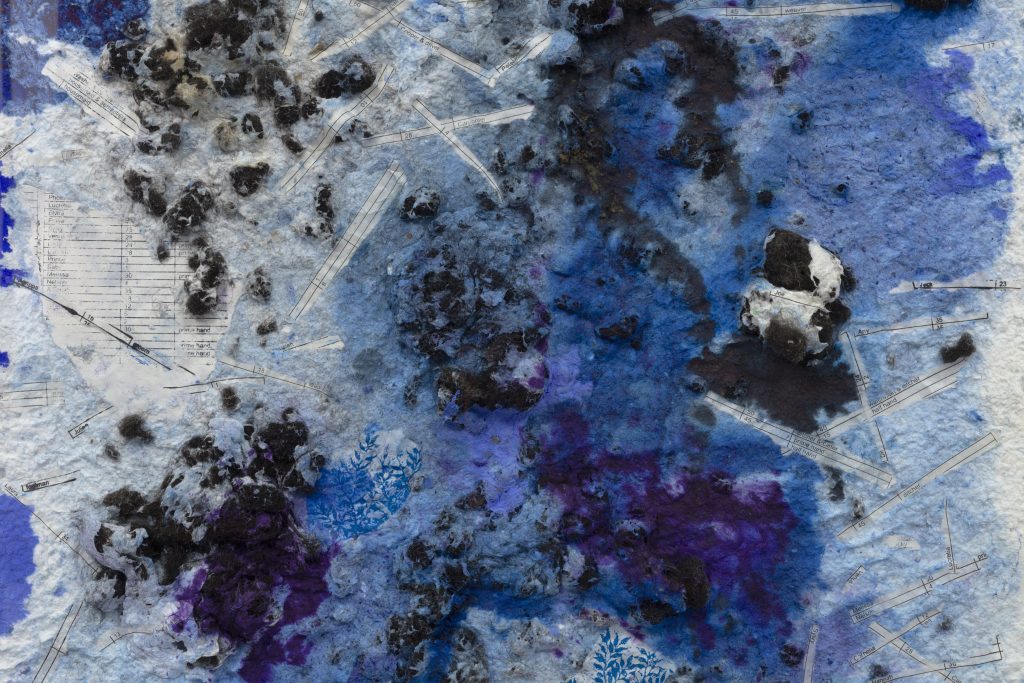
Detail of Adebunmi Gbadebo, 185 Negros, 2024. Cotton, human hair, dye archival documents silk-screened and riso printed. Photo by Lance Brewer © Adebunmi Gbadebo. Courtesy of the artist and Nicola Vassell Gallery.
“Painting, in particular, seemed to be steeped in a history that felt a lot like a history of white supremacy to me,” she said. “The canon is primarily a history of white male artists. When I did look at Black artists who have been extremely successful in taking painting and centering it in a Black subjectivity, these narratives and their works were still being analyzed and validated through this white history. I realized it wasn’t enough to put the Black figure in my work.”
The revelation set the young Gbadebo off on a series of material experimentations and a deep dive into her own family history. “That was the beginning of my thinking about Black care and Black bodies. The Black body is our history, and working with Black hair was a way of accessing this ancestral material that holds information that has nothing to do with whiteness,” she explained. “It led me to learn about my own ancestry and discoveries there too.”
The artist’s maternal family—the Ravenells—had ancestral roots in South Carolina. She was still in touch with family there. “I discovered True Blue plantation, where my ancestors had been enslaved, in my research,” she said. Her family still had a connection to the land too. On the land is a burial ground that was established c. 1700—her family contributed to bury on the cemetery after Emancipation. In 2018, the family had a reunion at True Blue.
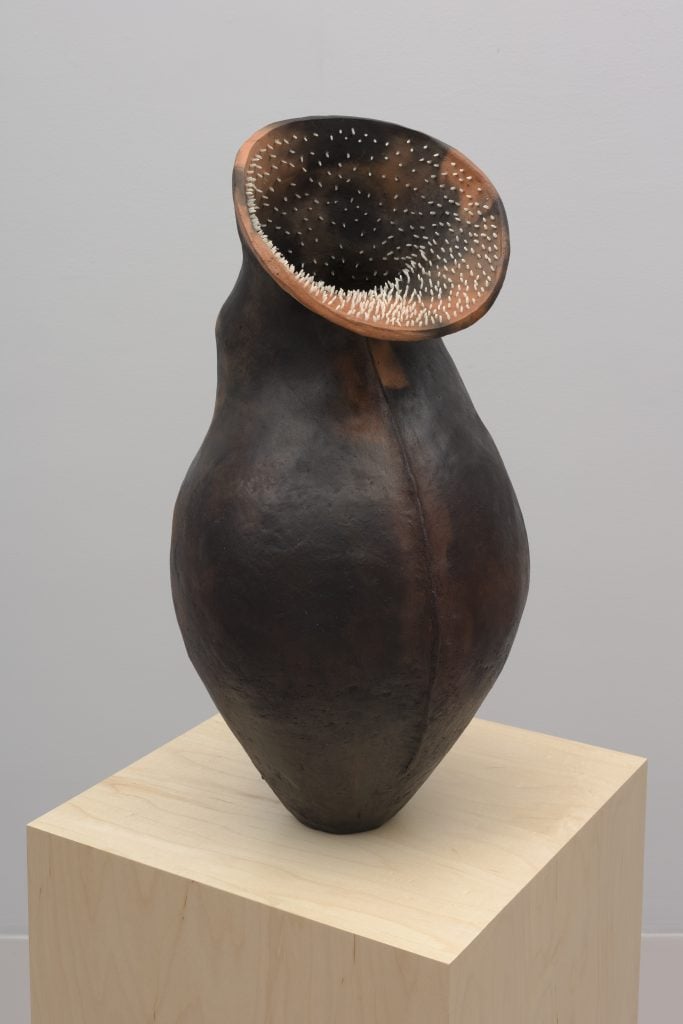
Adebunmi Gbadebo, Anna Eliza Clay William, Died, Oct 29, 1918, Agę 24 years, 2024. Photo by Lance Brewer © Adebunmi Gbadebo. Courtesy of the artist and Nicola Vassell Gallery.
“It wasn’t until I visited True Blue Plantation that I felt so moved by the red earth that this history grew from,” she recalled, “Crops grew from this red earth that my ancestors are currently buried. That earth carries their blood, their flesh, their bones. The experience propelled me to use that earth as material and to this practice of ceramics.”
Gbadebo travels to South Carolina several times a year, collecting soil from the land beyond the burial ground. “But during these trips, I’m digging about a thousand pounds of soil which will sustain me for about six months. I drive all of that soil back to my studio in Philadelphia and go through the process of transforming that soil into viable clay,” she said, “I use a Nigerian coil technique to build all the vessels that is very intuitive.” The hair in her sculptures, meanwhile, she collects from local barbershops or is given to her from people familiar with her practice.
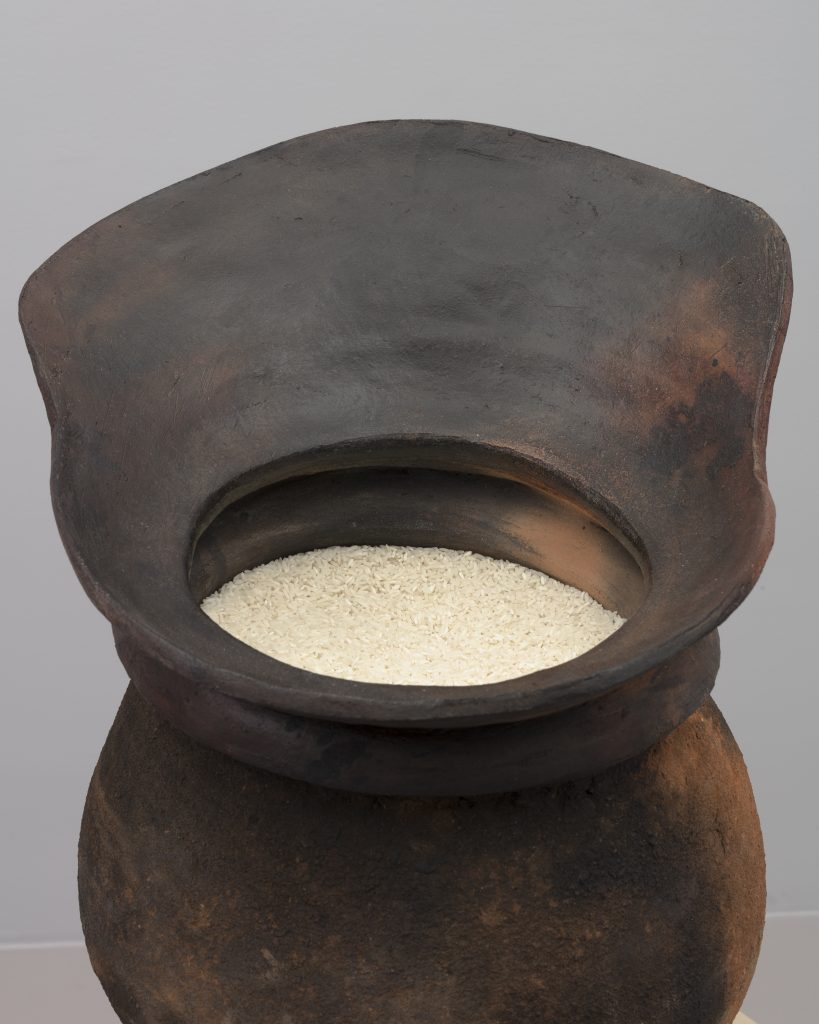
Adebunmi Gbadebo, Scott, Ida, 1892-1945, Asleep in Jesus, 2024. Photo by Lance Brewer © Adebunmi Gbadebo. Courtesy of the artist and Nicola Vassell Gallery.
For Gbadebo, she hopes viewers understand these materials are part of a living history.
“There’s so much that we’re experiencing as a global community, as a country, that have their roots in systems of oppression, suppression, injustice, erasure, and loss,” she said, “When historians hear my family name they are often taken back. The white Ravenel family in South Carolina were a major slaveholding family,” she said “Their wealth is still very prominent. There’s a bridge in Charleston named the Ravenel Bridge. There are Ravenels on Bravo TV right now. My family has always been grounded and rooted in understanding our place in this history,” she explained.
For the artist, honoring that history as well as the family that lives on, has led her to a broader project. “I’ve been incorporating various crops including rice and cotton. In the works at Independent, the works even include animal bones,” she said, “I’ve also been able to secure and collect the original church pews that were on the plantation church, built by my ancestors. I’ve collected the balustrades of a house built by enslaved ancestors on the University of South Carolina’s campus, a house owned by Louisa McCord. These acts of retrieval are essential to Gbadebo. “For me, these are physical evidence of my ancestors and their labor, their skill. That they were here. That they existed.”
